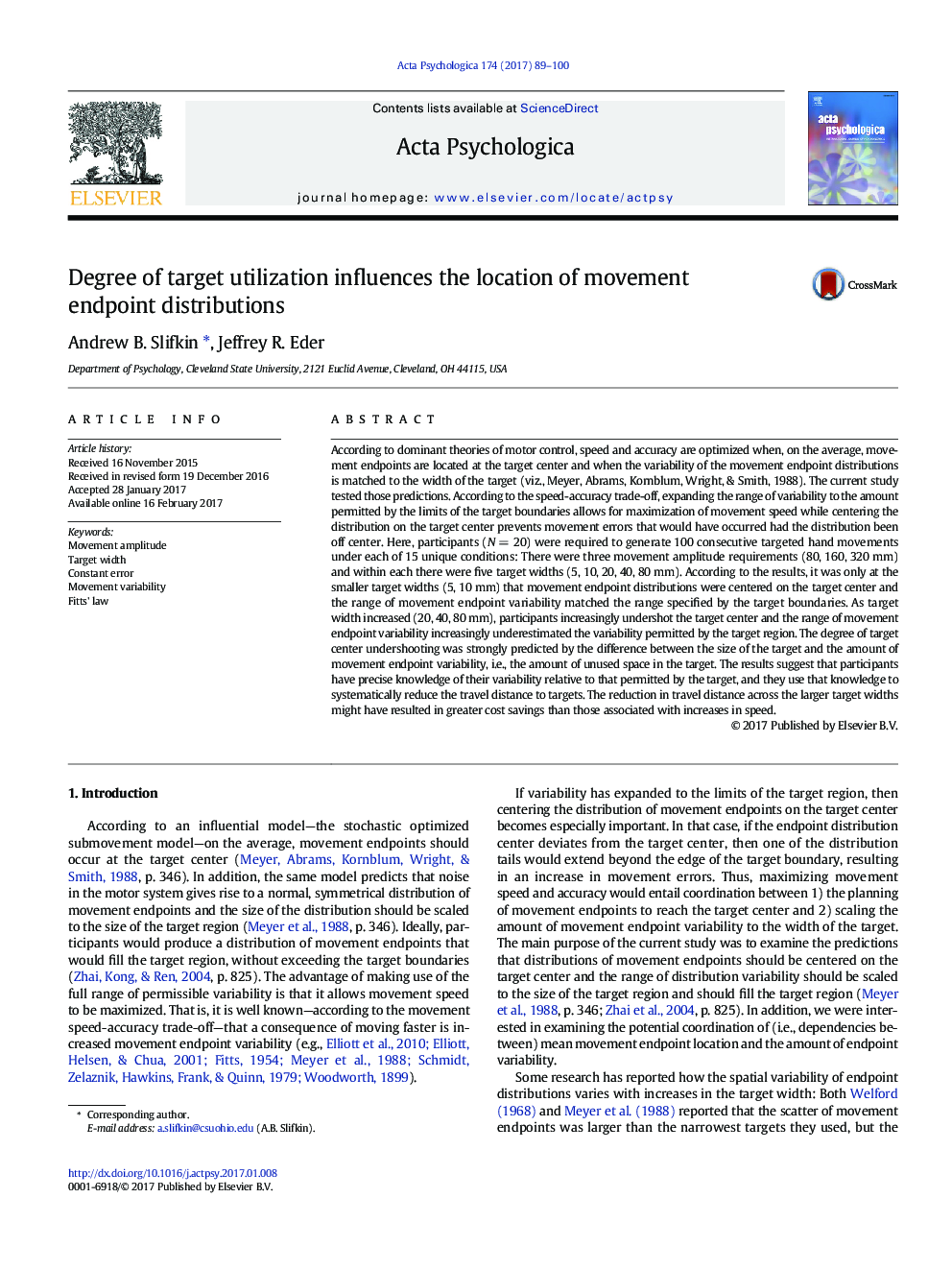| کد مقاله | کد نشریه | سال انتشار | مقاله انگلیسی | نسخه تمام متن |
|---|---|---|---|---|
| 5040244 | 1473584 | 2017 | 12 صفحه PDF | دانلود رایگان |
- As target width increased, mean endpoint location undershot the target center.
- As target width increased, endpoint variability underestimated the permitted variability.
- Amount of unoccupied target space predicts amount of target center undershooting.
According to dominant theories of motor control, speed and accuracy are optimized when, on the average, movement endpoints are located at the target center and when the variability of the movement endpoint distributions is matched to the width of the target (viz., Meyer, Abrams, Kornblum, Wright, & Smith, 1988). The current study tested those predictions. According to the speed-accuracy trade-off, expanding the range of variability to the amount permitted by the limits of the target boundaries allows for maximization of movement speed while centering the distribution on the target center prevents movement errors that would have occurred had the distribution been off center. Here, participants (NÂ =Â 20) were required to generate 100 consecutive targeted hand movements under each of 15 unique conditions: There were three movement amplitude requirements (80, 160, 320Â mm) and within each there were five target widths (5, 10, 20, 40, 80Â mm). According to the results, it was only at the smaller target widths (5, 10Â mm) that movement endpoint distributions were centered on the target center and the range of movement endpoint variability matched the range specified by the target boundaries. As target width increased (20, 40, 80Â mm), participants increasingly undershot the target center and the range of movement endpoint variability increasingly underestimated the variability permitted by the target region. The degree of target center undershooting was strongly predicted by the difference between the size of the target and the amount of movement endpoint variability, i.e., the amount of unused space in the target. The results suggest that participants have precise knowledge of their variability relative to that permitted by the target, and they use that knowledge to systematically reduce the travel distance to targets. The reduction in travel distance across the larger target widths might have resulted in greater cost savings than those associated with increases in speed.
Journal: Acta Psychologica - Volume 174, March 2017, Pages 89-100
